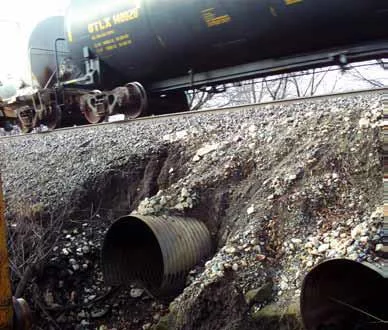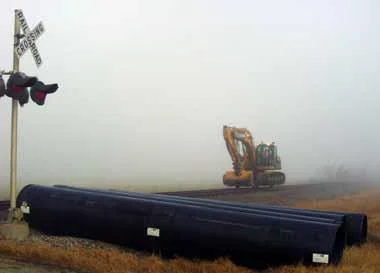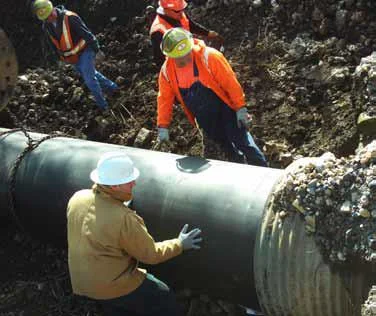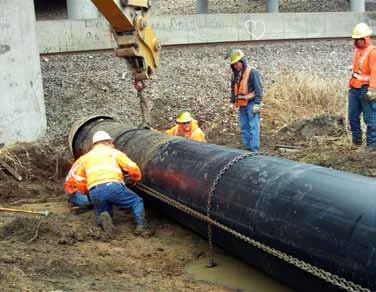Resources
Field Reports
Three Damaged Culverts Beneath Railroad Tracks Relined with Snap-Tite®




The Problem
Drainage culverts installed 40 – 50 years ago are now past their design life and failing. Union Pacific (UP) Railroad, a major U.S. railroad, needed to replace three failing culverts underneath its railroad tracks near Coffeyville, KS. The three corrugated metal pipe (CMP) culverts were completely worn out. Leaving them in this condition might result in a total track collapse, disrupting service. Each of the old culverts was approximately 50 feet in length and 48 inches in diameter.
The Solution
Snap-Tite representatives Russ Wosk and Brad Elisar consulted with Clint Jones, the maintenance supervisor for the railroad, to find the best solution for fixing the damaged pipe.
UP Railroad has an established relationship with Snap-Tite because the Snap-Tite culvert lining system offers a no-dig solution for relining the pipe. Made of high density polyethylene (HDPE) pipe, Snap-Tite’s patented male/female machined pipe ends are ‘snapped’ together, piece-by-piece, and pushed into the full length of an existing pipe. Then grout is used to fill in any annular space or voids between the old culvert and the new pipe liner. Snap-Tite® pipe liners also typically increase drainage flow even though the diameter of the pipe liner is smaller than the diameter of the original pipe. Snap-Tite also meets AASHTO Standard M326 for rehabilitating culverts.
Union Pacific also saves money and time by using its own crews to install Snap-Tite without needing to hire outside contractors. Its own crews can handle a Snap-Tite slip-lining installation because it does not require any specialty equipment. The railroad already had all the equipment available that was necessary to complete the project.
The Installation
The railroad company’s crew set up to reline the culverts with 42-inch outside diameter Snap-Tite pipe. Since the repairs were taking place in a somewhat remote location, an excavator and other supplies were brought to the site using a method called “high railing.” This method entails driving the equipment down the railroad tracks to the site.
For each of the culverts, the crew started with one standard 24-foot section of Snap-Tite pipe. Snap-Tite pipe comes in lengths from two to fifty feet, depending on the needs of a project and the space available to snap the pieces together. The crew slid the first 24-foot section into the old culvert, making sure part of it remained outside of the pipe. Then they snapped another section of Snap-Tite pipe using only come-a-longs and chains. Then the joined section was slid further inside the pipe until the old pipe was fully lined. This was done in the same way for each of the culverts. Finally, any annular space or voids was filled in with grout, resulting in three fully rehabbed culverts.
The installation was completed successfully without disturbing the structure of the rail tracks and without having to shut down the rail line. The railroad saved time and money by using its own crews.


